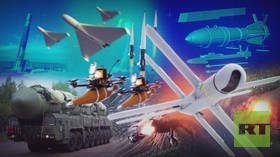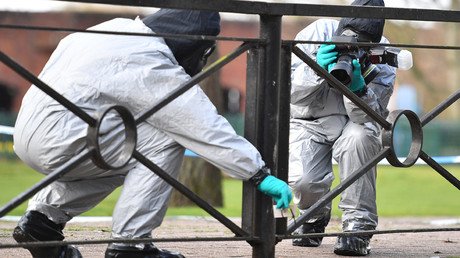Threat assessment: NASA’s asteroid hunter reveals scariest, Earth-bound objects (VIDEO)

Hundreds of cosmic objects swarming unnervingly close to Earth come to life in an intimidating new NASA visualization, based on the latest data from its asteroid-hunting mission.
NEOWISE has charted almost 30,000 objects since it resumed its work in 2013, including 788 near-Earth objects and 136 comets. Ten of the objects discovered by NEOWISE in the past year alone have been classified as potentially hazardous asteroids (PHAs).
READ MORE: Football field-sized asteroid zooms dangerously close to Earth
NASA’s latest animation is based on detections made by the telescope over its last four years of surveying the solar system. The green dots represent near-Earth asteroids while the yellow dots stand for comets.
A ‘near-Earth object’ is defined as an asteroid or comet whose orbit intersects with the Earth's and therefore may pose a threat. They can range in length from meters to tens of kilometers. Near-Earth objects are classified as potentially hazardous based on their size and how closely they approach Earth's orbit.
More than 2.5 million infrared images of the sky were collected last year by the survey and have been added to previous years of data to complete an archive of 10.3 million sets of images. The project has scanned the sky nearly eight times over the four-year period. It is currently three-quarters of the way through its ninth run and will continue through to June of this year.
Do you know our neighbors? The Near-Earth Object Wide-field Infrared Survey Explorer and IPAC present the NEOWISE 2018 Data Release. The archive now contains over 10.2 million calibrated image sets and a database of over 76.8 billion source detections. https://t.co/rfrqMrXGaQpic.twitter.com/VMYUU5pwe8
— Caltech IPAC (@caltechipac) April 19, 2018
The spacecraft was placed into hibernation in February 2011, after completing its search of the inner solar system but was reactivated in December 2013, discovering its first potentially hazardous near-Earth asteroid, 2013 YP139 just six days later.
Like this story? Share it with a friend!















